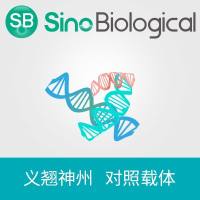Preparation and Quantification of Pseudotyped Retroviral Vector
互联网
650
Retroviral vectors have been widely used for research and clinical trials in gene therapy because of their high transduction efficiency. Retroviruses interact with target cells through their surface molecules (i.e., envelope proteins) and cellular receptors, which limit the susceptibility of target cells to retroviral vectors. Murine leukemia retrovirus (MuLV) pseudotyped with vesicular stomatitis virus G glycoprotein (VSV-G) overcomes the species barrier and is more resistant to mechanical and biochemical inactivation. A cell line producing VSV-G pseudotyped MuLV vector can be established by transfecting 293T cells expressing Gag, Pol, and VSV-G (293 GPG cell line) with a retroviral vector plasmid. Transduction potency of the resulting VSV-G pseudotyped MuLV retroviral supernatant can be quantified by titration, electron microscopy (EM), and the reverse transcriptase (RT) assay. These protocols provide methods to prepare and quantify a pseudotyped retroviral vector with high transduction rates for most types of target cells.





